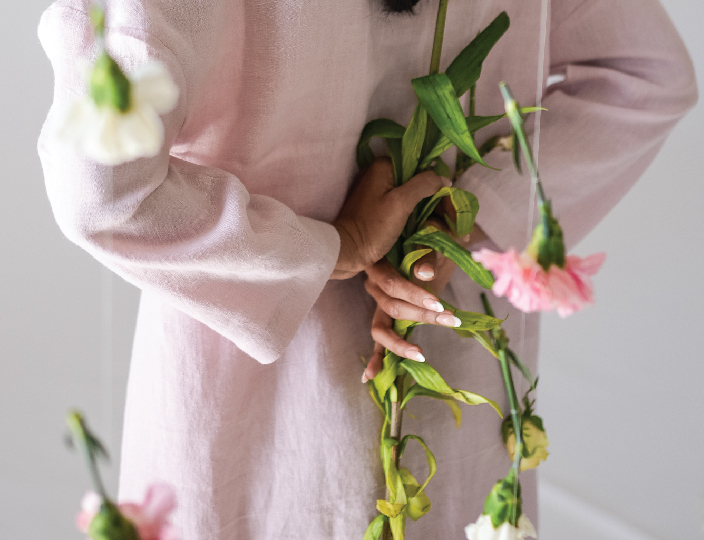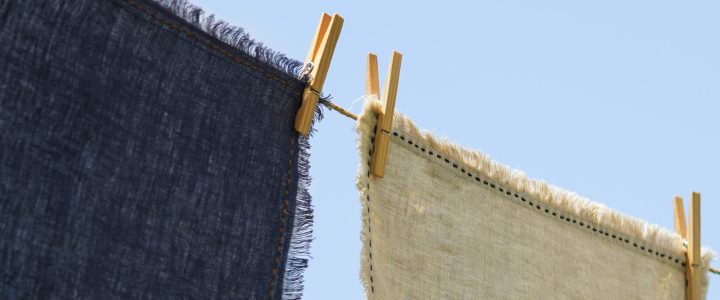
Home / Can You Bleach Linen? Tips How To Bleach Linen Perfectly

Linen is a delicate fabric and is almost like a royal baby, which takes its army of caretakers. You can always wash and ironing linen after washing. But what if you get a stain on it? Are you simply going to rub a detergent and water mix on it and hope that the colour washes away? Or what if those pretty white linens have turned into a shade of yellow because of years of use? This state calls for a colour refreshment!
The simple answer is – yes! Whether your clothes are yellow, grey, or stained, bleaching linen is the ideal option to make them look like new.
You can use natural methods or store-bought chemicals to bleach your linen fabrics, but remember, only do it on white clothes. If you bleach dark linens, it can lead to colour bleeding.
Now that you are clear on this let us understand what kind of bleach you should use.
We think about bleach, and our minds instantly turn to “chlorine”. We are used to cleaning our house with chlorine bleach, but clothes are different. They are delicate and require something light to bring a fresh touch to them.
There is only one instance where chlorine bleach gets a pass. It is when all the other methods have failed. This indicates that the stains are stubborn and require something strong.
So, this is your cue to go for that bottle of chlorine bleach. It will remove the colours from your clothing (yes, that means it is only viable for whites).
But before you jump to this method, it is advisable to do a patch test. Instead of bleaching the entire linen bed sheet in one go, take a small area to check the efficacy.
Read More: Does Linen Shrink In The Dryer? Linen Drying Guide
In case the stains are not that strong or you want to simply give a refreshed look to your old clothes, you can use other methods. Wondering how to bleach linen?
One of the basic methods of bleaching linen is using baking soda. Here is how you can do it –
If there are stains on the clothes, you can always pre-treat them before the bleaching process.
White vinegar is a suitable choice in case you want to remove a stain or whiten a garment. Here is how to do it –
This is not as strong as a chlorine bleach solution but is definitely a safer choice for dark-coloured fabrics.
Oxygen bleach is a mild option that is suitable for not only home cleaning but your linen garments as well. It not only lends a whiter finish to the clothes but also kills bacteria. The process is –
This is an environmentally friendly option to bleach.
This is one of the strongest methods to bleach your garments. Here is how you can use it –
This will help turn your heavily stained linens into pristine whites, just like before.
Lemon juice sounds like a low-key home remedy, but it works effectively. You can use it to get rid of those dark stains on your linens –
Read More: Is Linen Scratchy? How To Soften Linen Quickly?
Want to white and bright fabrics? Your laundry guy would recommend bleaching. Just like our face needs a little bleach to shine, so do our fabrics. But it might not be okay to bleach all the fabrics. Let us explore some of the pros and cons related to linen bleaching:
But the question is, do you always have to bleach your linen clothes?
Linens are everyone’s prized possession. You do not want them to get stained and wear the same garments for years. But continuous use can turn even the whitest of linens into yellow. Or you might just drop ketchup or mustard on it; we have all been there.
Bleaching linens is advisable in only two cases –
Read More: Sheets Turning Yellow? Know How To Keep White Sheets White
Bleaching linen is easy. But make sure to be cautious around this delicate fabric. You do not want to damage the cloth! Here are some ways, tips and tricks to bleach linen –
You bleach other fabrics like cotton and silk just like you do it with linen. The process mostly remains the same, with a slight variation here and there. Let’s break it down –
With linens, be a little more cautious. These “handle with care” garments are made from strong and durable fibres but still respect love and care from your side. When it comes to bleaching, make sure to read the instruction labels carefully before proceeding. Luckily, the process is super easy and will not require additional purchases!

Experience the artisanal love and redefined luxury that curates a homely feeling. A heavenly touch of our linens will create endless memories